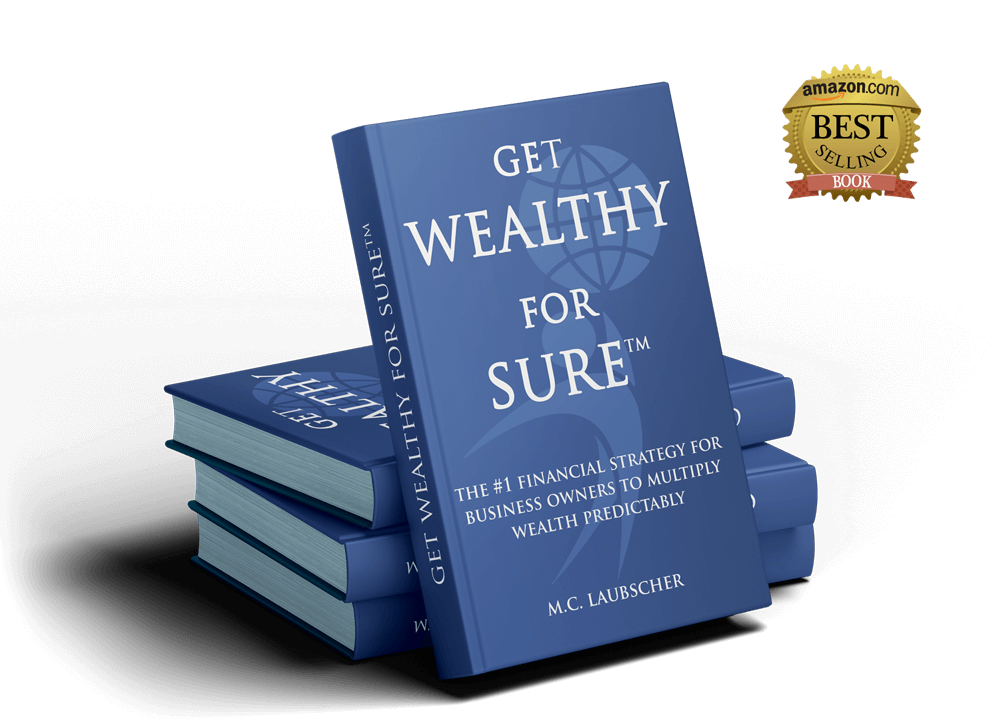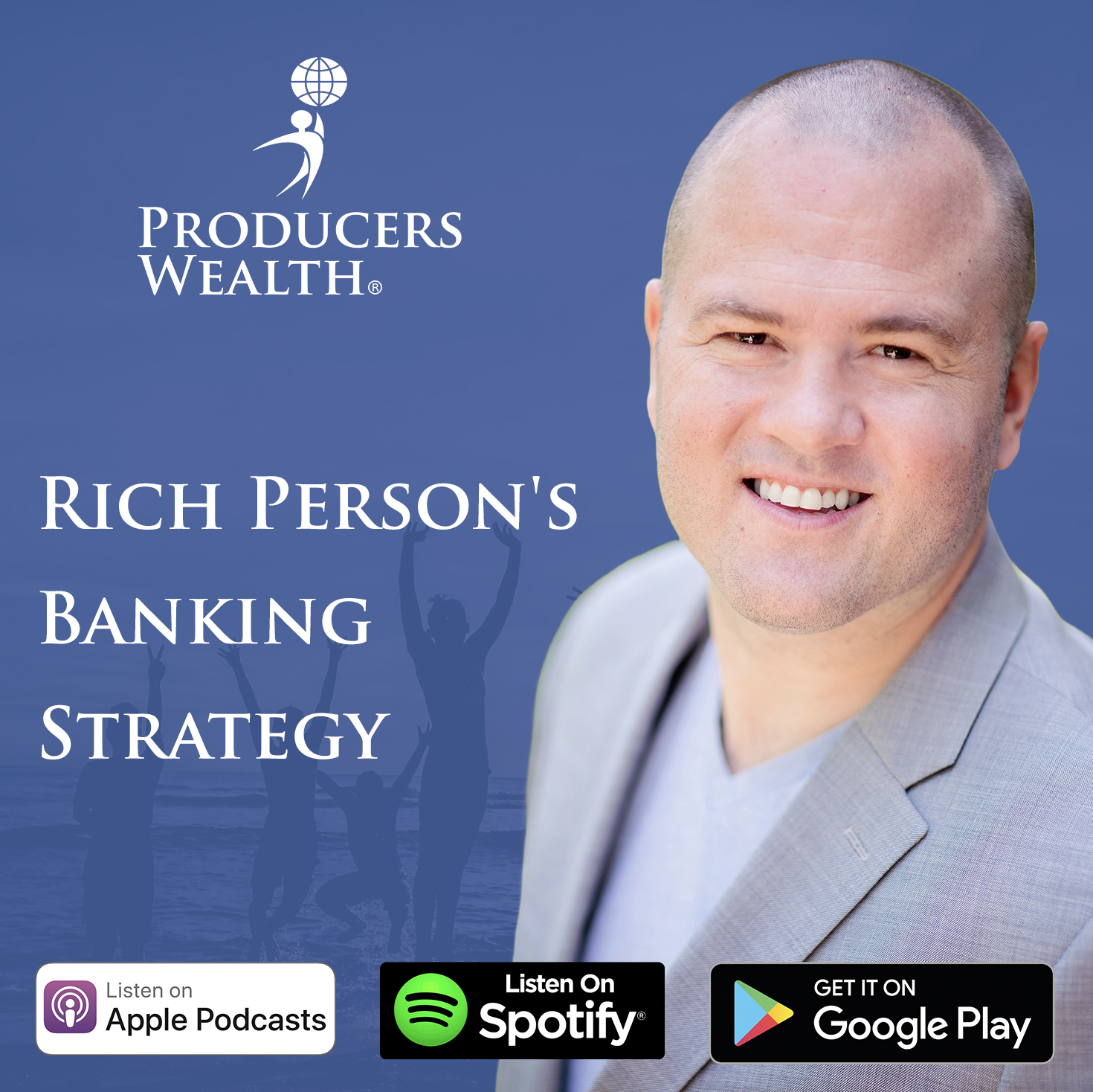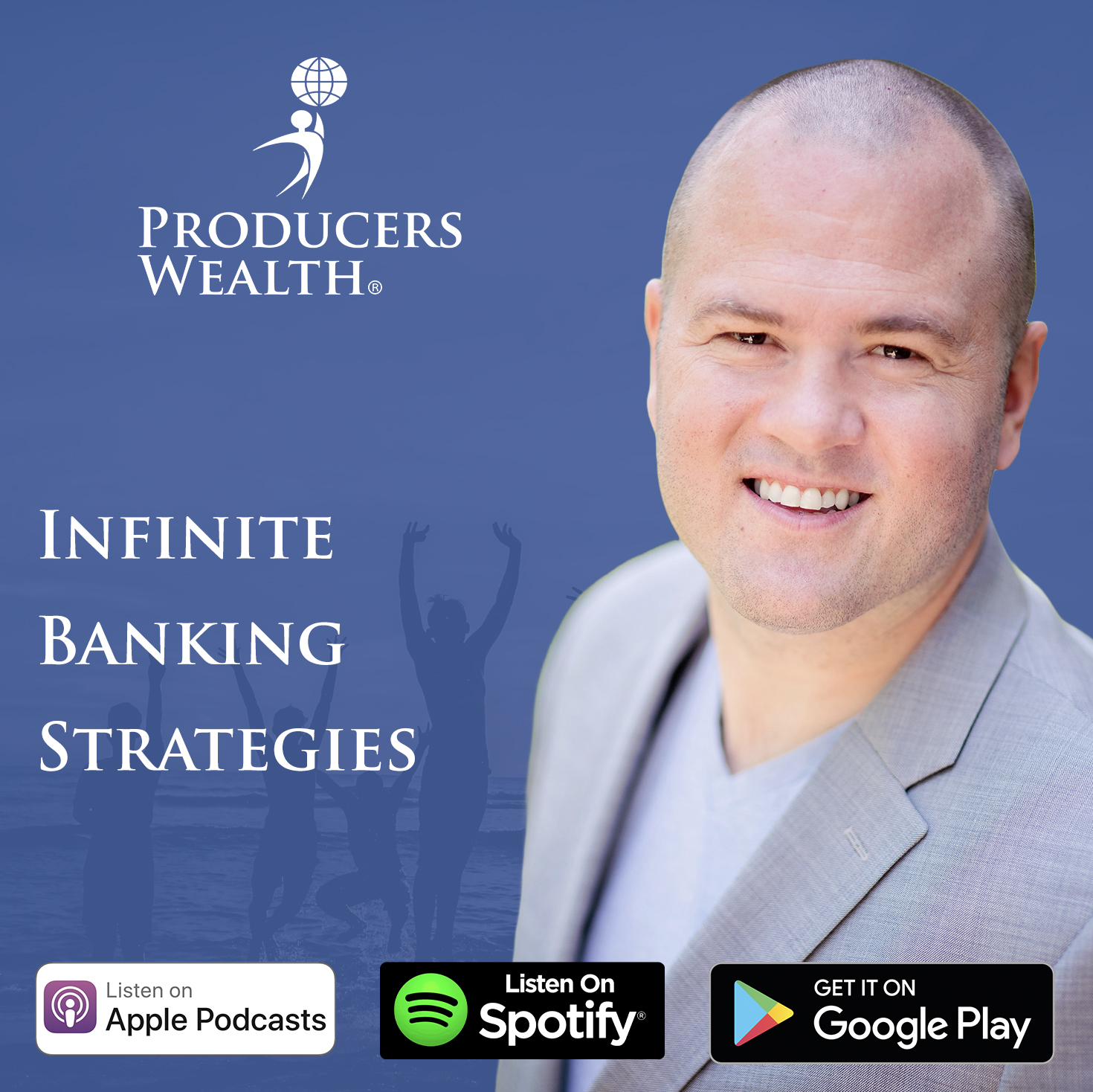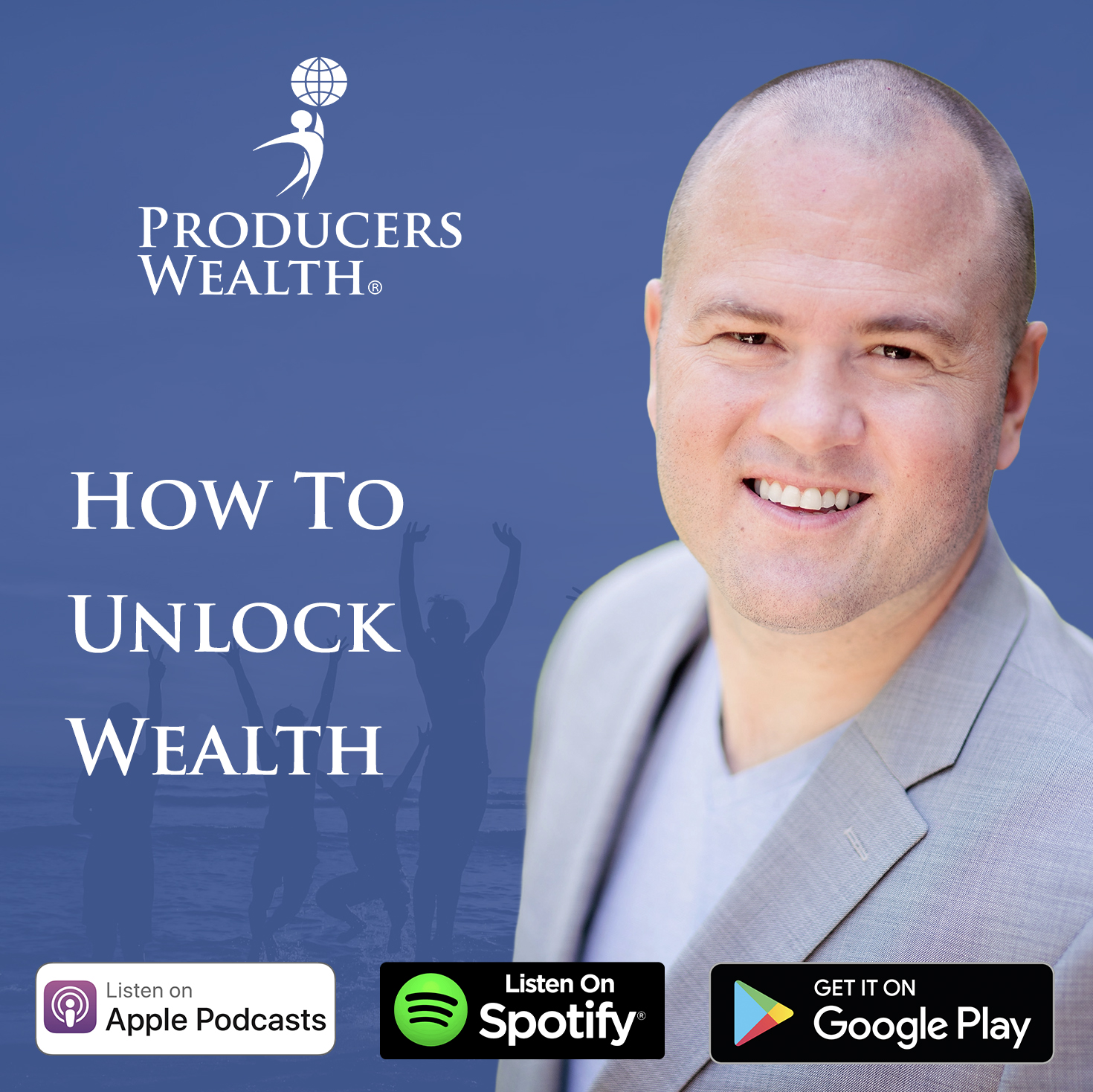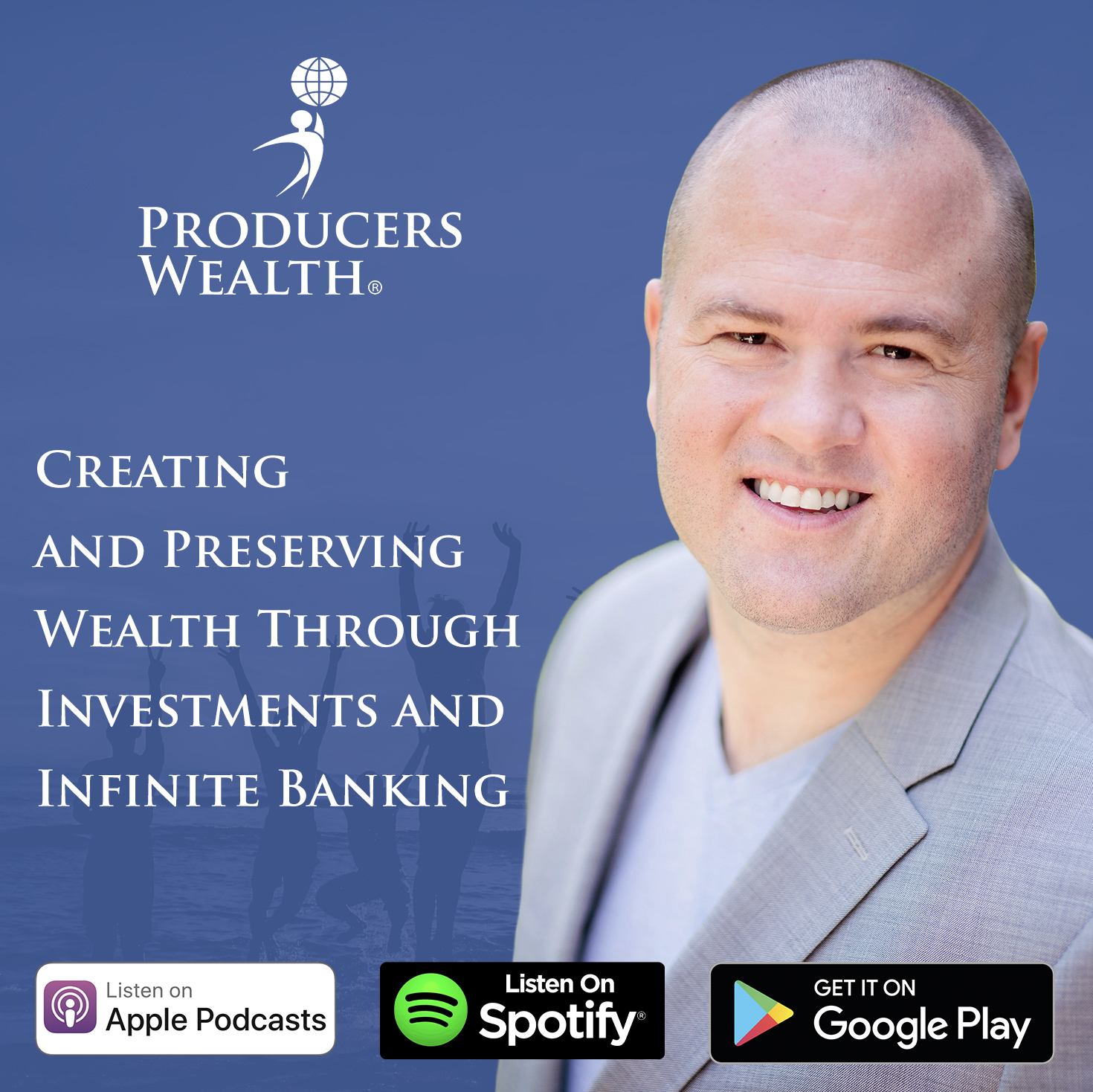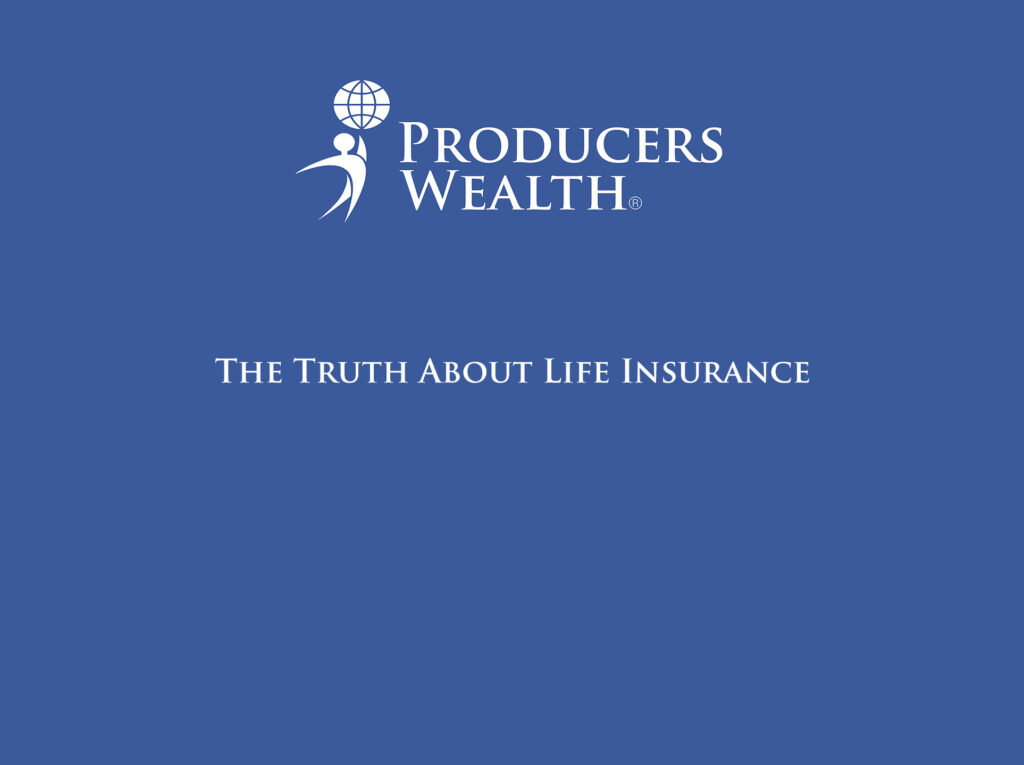
Why do so many people want to run away when they hear the words “life insurance”?
The problem isn’t life insurance: the problem is the rampant misinformation about life insurance spread by the media and financial influencers.
The business model of the media industry is to drive as many eyeballs to their content as possible so they can run you advertisements from their sponsors. The more attention the content gets, the more advertising money it makes. We’re no longer living in an Information Age–we’re living in an Attention Age.
Because of the way the media makes money, you’re constantly overloaded with information that you can’t trust. It was designed to capture your attention, not to inform you. Many times, it doesn’t matter to the creators if the information is accurate as long as it draws attention.
The media will never challenge this information because their clients are the advertisers. You may think that you, the viewer, are the media’s client, but that’s not the case. You’re just the product being sold to hungry advertisers.
And who are the biggest ad spenders besides pharmaceutical companies and military contractors? The financial services industry. This means that the information you get from the media about financial planning and wealth management is the information the people paying the media companies want you to get. It’s all marketing…
Think about how pharmaceutical ads work. At the end of the commercial, they’ll say, “Ask your doctor if it’s right for you.” They’ve just pitched you a product without knowing anything about you, your medical history, or if you’re even struggling with the health issue the drug is trying to solve. It’s the same with financial services… Financial ads recommend you a product without knowing anything about you. Wall Street pitches you a specific mutual fund or ETF without knowing anything about your circumstances and needs.
The focus is on the product, not on you. These advertisers don’t care how you use the product, how it fits into your financial strategy, or what result it will have for you, as long as you buy it. Once they have your money, they send you off with a, “Well, hope that works out okay for you.”
Beyond advertising, you’ll hear wildly different information on life insurance from social media and financial influencers.
You might see TikTok and YouTube gurus presenting life insurance as an exotic solution… though it’s been around for over 170 years. These influencers paint a picture of all of the amazing benefits of life insurance without actually understanding it. They promise the world, portraying life insurance as a “get-rich-quick hack.” They combine it with dubious strategies like buying cars to get rich or using exotic trust and foundation strategies to “never pay taxes again.”
Meanwhile, other influencers are naysayers. Dave Ramsey says that life insurance is the worst place to put your money and that it’s only good for the agents that sell you the life insurance. Suze Orman says that you should never buy permanent life insurance under any circumstance. Many other financial celebrities say that you should buy term insurance and invest the rest in a diversified portfolio of stocks, bonds, and mutual funds.
Whether you’re listening to the pro-life-insurance crowd or the anti-life-insurance crowd, you need a shower when you’re done.
No matter who you listen to, everyone has an agenda to promote or a product to sell. And with trust in institutions at an all-time low, many people are left wondering whose voice to listen to.
How Strong is Your Opinion?
If you ask 100 people how they feel about Pit Bulls, you’ll probably hear everyone answer 1 of 3 ways. Some people are totally for Pit Bulls, others are totally opposed to Pit Bulls, and others can see both sides.
But if you ask 100 people how they feel about life insurance, you’ll get 100 different answers. And not just different answers… Extremely emotional, passionate answers.
Everybody hates insurance. It’s impossible not to hate insurance because most people have insurance that they have to pay every single month, every single quarter, every single year, without ever reaping the benefits of that insurance.
And if they do get to use the benefits, as with, for example, homeowner’s insurance, their insurance costs go up immediately after filing their claim.
It’s no wonder most people have a bad impression of life
insurance…
The life insurance product that gets sold the most often is term insurance. 99% of term policies don’t pay out… Term life insurance is basically a bet with the insurance company on whether you will die in a certain time frame or not. For the 10, 20, or 30 years that you pay premiums, if you die, your beneficiaries get the death benefit tax-free. But if you don’t die, the insurance company gets to keep all of the premiums in that time frame. It’s a bet that you hope you lose, because if you win, you’re 6 feet under the ground, but losing the bet means you’ve wasted money.
My goal with this book is to get you to forget what you think you know about life insurance, understand this strategy, and determine if it is right for you with a full understanding of how it works. The mission of my company is to elevate the financial well-being of business owners and their families. Life insurance, if leveraged properly, has the potential to do this.
Let go of all the misinformation about life insurance that other people have put into your head… It’s time to arm ourselves with facts.
If something you thought to be true wasn’t true, when would you want to know about it?
“Your assumptions are windows on the world. Scrub them off every once in a while, or the light won’t come in.”
–Isaac Asimov
It’s Tried and True!
From the way that some misinformed influencers talk, you’d think that life insurance was an exotic solution that just fell out of the sky…
But this strategy is over 170 years old and has been used by banks, financial institutions, corporations, and the wealthiest families and individuals in the United States for all of that history.
Farmers have used life insurance as a cashflow management system for over 170 years. Farmers deal with the “seasons” of a business in a much more literal and direct way than the rest of us. They need to plan to have capital available even when it’s winter and they aren’t able to grow any crops. They may not be making a profit every season, but they still need capital available to hire employees, plant the seeds, work the land, pay for fertilizer, and nurture the crops until the season when they’re finally ready to be harvested. Then, when the farmer takes the crops to market, there is a massive windfall.
Like the farmer, every business has seasons… Your sales may peak in Q2 and lull in Q4, but you need to have cash on hand each month to pay your employees, develop marketing campaigns, test new products, and do anything else that is necessary to keep the business running. Why not leverage the tried and tested strategy that farmers have used to combat this issue since long before your grandparents were born?
Most people see 401ks as a “safer” savings strategy, but life insurance is over 130 years older than 401ks… Life insurance was the primary savings vehicle for Americans until 401ks were launched in the 1980s.
Not only have Mutual Life Insurance Companies been around for over 170 years in their current format–they have been profitable every single year for over 170 years consecutively. There is a carrier that has been around since 1847 and has paid dividends every single year consecutively since then. Think about all of the turbulent historical events we’ve had since 1850… We’ve had the American Civil War, two World Wars, the Great Depression, economic crashes… The world’s monetary system changed several times throughout that time period, and these companies were profitable every year.
Mutual Life Insurance companies have been through almost every single economic scenario imaginable over the last 170 years and still delivered on their promises.
What are the safeguards of mutual life insurance companies?
There are six layers of protection for policyholders of dividend-paying whole life insurance with mutual life insurance carriers…
- All life insurance companies in the U.S., including mutual companies, are regulated by state insurance departments. Regulations ensure that these companies maintain certain solvency standards, keep adequate reserves to pay future claims, and follow fair practices in dealing with consumers.
- If a life insurance carrier finds itself in financial difficulty, the state commissioner’s office can take control of the carrier and run the carrier on behalf of the shareholders.
- In the event that a life insurance company fails, state life insurance guaranty associations provide a safety net for policyholders. Coverage limits vary by state, but these associations work to protect policyholders by guaranteeing continued coverage or refunding a portion of policy values.
- Life insurance carriers are audited regularly by independent rating companies. You want your policy with the top-rated financial mutual life insurance carriers that have a track record of paying dividends for over 170 years.
- If an insurance company declares bankruptcy, regulators will usually seek another insurance company to assume the policies of the insolvent insurer. This process involves transferring the policies and associated liabilities to a financially stable company, ensuring continued coverage for policyholders.
- The Federal government can step in and bail out a life insurance carrier. In 2008, AIG, a company that is a stock company and not a mutual life insurance carrier, was bailed out by the Federal government.
Mutual life insurance carriers are owned by the policyholders, who are the shareholders, so interests are aligned. When mutual life insurance carriers run their business in the best interest of their policyholders, more people want to buy policies with them.
Meanwhile, stock life insurance carriers are owned by the owners of the stock of the company. The business is run in the best interest of the stockholders so that more institutions would want to buy their stock. Vanguard and Blackrock are the biggest holders of AIG stock currently8.
How many publicly listed companies on the New York Stock Exchange or on the equity markets do you know that have been in existence for 100+ years and have been profitable every single year consecutively for over 100 years?
During these 170 years, many wealthy, influential people have used life insurance to achieve incredible things…
When Walt Disney wanted to launch Disneyland, no bank would lend him money for what seemed like a crazy idea… So he leveraged the cash value of his life insurance policy to build his dream9. Now, the entertainment empire he built is worth billions, and Disney is recognized as a visionary whose theme parks are beloved, iconic fixtures of American culture.
Ray Kroc, the CEO who turned McDonald’s into the most successful fast-food corporation in the world, relied heavily on the cash value of his life insurance to get the franchise off the ground. For the first eight years he was CEO, he didn’t take a salary and used his two cash-value life insurance policies to overcome constant cashflow problems. He used the policies to cover the salaries of key employees and pay for unforeseen expenses. He even used some of the money to create an advertising campaign around the infamous Ronald McDonald, which boosted the franchise’s popularity10.
Pampered Chef founder Doris Christopher funded her first inventory using a policy loan from her cash value life insurance.
Now, the company has grown into a multimillion-dollar business known internationally11.
U.S. presidents like John F. Kennedy, Howard Taft, William McKinley, and Franklin D. Roosevelt have utilized dividend-paying whole life insurance policies. Current president Joe Biden has six dividend-paying whole life insurance policies with a mutual life insurance carrier.
Think Like A Rockefeller…
At one point in history, the Rockefellers and the Vanderbilts were two of the wealthiest families in the United States. Today, the Rockefeller family has not only protected their wealth but grown it significantly with each generation. Meanwhile, the Vanderbilt family still has universities and buildings named after them… But at a recent family reunion, they didn’t have any millionaires in attendance, except for Anderson Cooper, but his millions came from CNN, not the family fortune. The Vanderbilts squandered their wealth, while the Rockefellers protected and increased it with each generation.
While the Vanderbilts divided their wealth among the family with no strategy, the Rockefellers kept the capital together in a family bank using life insurance contracts13. You don’t have to be a Rockefeller to do what the Rockefellers do.
The family office model in the US is based on the way the Rockefellers managed their wealth. Family Offices are wealth management firms that manage an ultra-high-net-worth family’s wealth. With a Family Office, wealthy families have access to multiple advisors under one roof, all of whom collaborate to align the family’s financial strategies. Family Offices buy as much life insurance for the families whose wealth they manage as life insurance carriers will sell the family. Like the Rockefellers, the wealthy families of today (and the experts who manage their money within the Family Office), understand that life insurance is a tried, true, unbeatable strategy for preserving wealth for generations to come.
How Banks, Corporations, and Universities Win With Life Insurance
Throughout society, many organizations and institutions use life insurance to accomplish their goals. The next time you hear an influencer portraying life insurance as a crackpot strategy, consider all of the commonplace ways life insurance is used every day…
Banks
Tier one capital is the safest capital that a bank has. Due to banking regulations, banks have to have a certain amount of capital in tier one. The majority of tier-one capital is placed in life insurance contracts because of the guaranteed tax-free growth and death benefits.
“Banks, when it comes to investing their own money, don’t follow the conventional wisdom of putting their cash into mutual funds, stocks, hedge funds, term life insurance or risky real estate deals. Instead, they place a large portion of their vital reserves into high cash value life insurance or whole life insurance policies.”
–Barry James Dyke
Banks buy as much life insurance as part of their Tier 1 capital as they are legally allowed to. According to the FDIC, banks are the largest purchasers of life insurance in the United States.
Corporations
Large corporations use life insurance as an incentive for CEO packages. If the CEO stays for a certain time period, such as ten years, they walk away with tax-free money in their life insurance policies. The longer the CEO stays, the longer the money grows, so CEOs who devote decades of service to the company are rewarded with millions of dollars of tax-free capital in a life insurance policy. Corporations also use key person insurance to hire and retain employees and protect themselves when they lose key employees. For example, GE has helped its CEO Jeffrey Immelt amass $22 million in life insurance coverage14. Kenneth Lay, former CEO of Enron, had a life insurance policy funded by the company, which meant that his assets were protected even when he was found guilty of fraud15. I don’t recommend committing fraud, but this case goes to show how effective life insurance is for asset protection. If it can protect the assets of a criminal involved in a major scandal, it can protect you from creditors in a run-of-the-mill business lawsuit.
Universities
Stanford University was founded with life insurance. After Leland and Jane Stanford lost their son to typhoid fever, they focused their efforts and wealth on helping other people’s children and launched Stanford University. In 1891, the first 555 students enrolled at Stanford University. But after Leleand died in 1893, the university struggled financially. Not wanting to give up on her late husband’s dream, Jane used Leland’s life insurance policy proceeds to fund operations and pay faculty, allowing Stanford University to weather a dangerous period of financial distress and grow into the success it is today16.
College sports teams often use life insurance as an incentive to attract top coaching talent and build the reputations of their sports programs. College football coach Jim Harbaugh, who led Michigan to a national championship in 2023, had a compensation package structured with a $2 million annual life insurance premium.
And You!
The best part of this 170-year-old solution that has been leveraged by banks, corporations, universities, presidents, and the wealthiest people in America? You have access to this same solution… You don’t have to be Walt Disney, a Rockefeller, the President of the United States, or the founder of an Ivy League university to use this strategy to Get Wealthy For Sure™.
Watch all of our educational videos on Infinite Banking here.
Disclaimer and Waiver
Michiel Laubscher & Laubscher Wealth Management LLC is not an investment advisor and is not licensed to sell securities. None of the information provided is intended as investment, tax, accounting, or legal advice, as an offer or solicitation of an offer to buy or sell, or as an endorsement, of any company, security, fund, or other offerings. The information should not be relied upon for purposes of transacting securities or other investments. Your use of the information contained herein is at your own risk. The content is provided ‘as is’ and without warranties, either expressed or implied. Michiel Laubscher & Laubscher Wealth Management LLC does not promise or guarantee any income or specific result from using the information contained herein and is not liable for any loss or damage caused by your reliance on the information contained herein. Always seek the advice of professionals, as appropriate, regarding the evaluation of any specific information, opinion, or other content.

